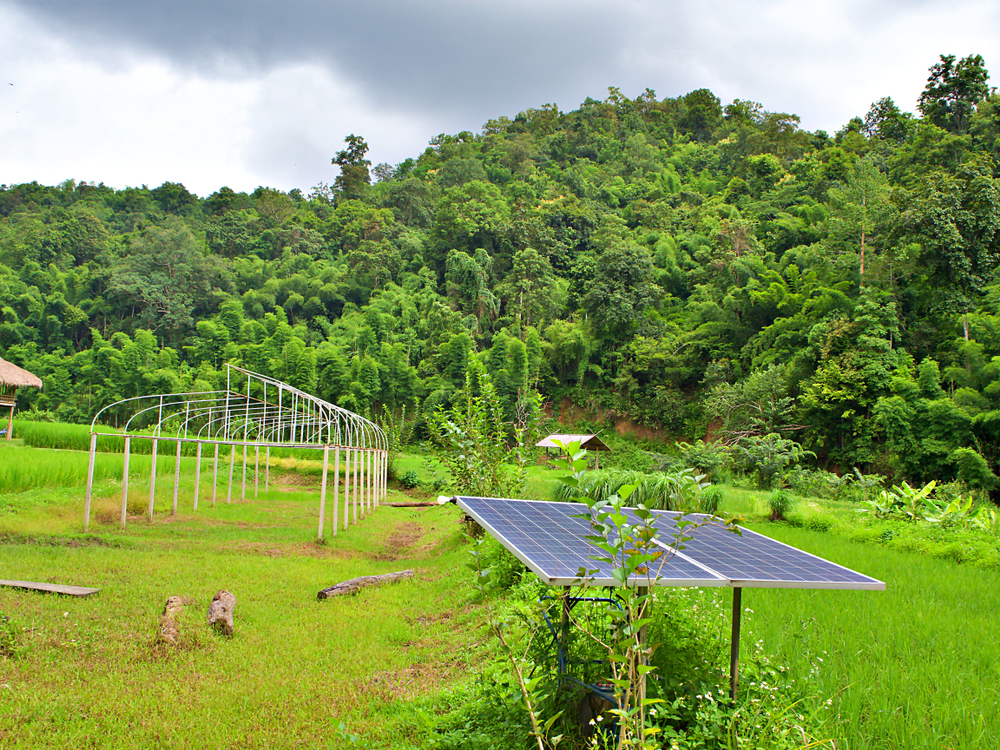How to be an Energy-Efficiency Champion
Fossil fuels are non-renewable and they are damaging to the environment. Unfortunately, the major energy sources that power our home–electricity and natural gas–rely on fossil fuels. Not only are these sources of energy damaging to the environment, but they also add to the financial burden for homeowners.
Natural gas might sound natural and eco-friendly, but the Department of Energy explains that natural gas is a fossil fuel just like the gas that’s used to power vehicles. Homeowners who want to live cleaner might look at alternative ways to power their home. Here’s how to be an energy-efficiency champion to help the planet and save money, too:
- Install solar panels
- Use wind power
- Upgrade insulation
- Install energy-efficient windows
- Opt for a solar water heater
- Grow a vegetable garden

Energy-Efficiency = Self-Sufficiency
The Guardian highlighted Amory Lovins, who is known as the “Einstein of Energy Efficiency,” and detailed the energy-efficient design of his home. It is so well insulated and designed that Lovins can grow tropical fruit even though he lives in Colorado.
Most homeowners probably can’t design the type of home that Lovins has created, but they can embrace energy efficient designs and self-sufficiency. Choosing to create energy instead of simply using energy supplied by utility companies can help homeowners make a positive impact on the planet and their wallet, too.
Solar Panels
Installing solar panels isn’t a low-cost project. The panels and installation can range from $15,000 to $20,000. However, these panels allow the home to be powered by sunlight. By producing power and using this power, homeowners can ditch electricity. These panels could allow for significant monthly savings.
Wind Power
Wind turbines also can create electricity for the home. Harness the power of the wind and install a turbine. This project has a bit more of a financial cost gap. According to HomeAdvisor, installing a wind turbine can cost a minimum of $100 and soar up to $80,000. The site notes that the average cost is $2,000, though.
Upgraded Insulation
A home that isn’t properly insulated will allow hot air to escape during winter, let in cold drafts and also let air conditioning escape during the summer. Poor insulation wastes energy and puts more pressure on the HVAC system. Since the majority of the energy use of the home is from heating and cooling, inadequate insulation could cause these costs to soar.
The amount of insulation depends on the climate. Insulation is measured in ‘r value,’ and different types of insulation provide higher or lower ‘r values.’ The U.S. The Department of Energy breaks down all the different types of insulation materials and their efficiency.
Energy-Efficient Windows
Air leaks can happen around windows, and older windows or less durable and inexpensive windows might provide less protection from the outside temperatures and the hot sun. Energy-efficient windows provide better insulation and can save homeowners money each month, too.
In addition, homeowners also can install awnings outside to shield windows from the sun and reduce the impact of the sun’s heat. Blackout curtains also can provide extra protection during the hot summer to shade rooms from the heat and take some pressure off of the HVAC system.
Energy-efficient windows cost $300 to $1,000 per window. Homeowners might elect to upgrade their windows one room at a time to keep costs manageable.

Grow a Vegetable Garden
While homeowners can make many changes to their home to decrease their dependency on utility providers, they also can become more sustainable by growing their own food. Plant a garden with fruit trees and harvest vegetables, too.
Homeowners should focus on fruit and vegetable varieties that are native to their area. Growing a garden filled with fresh produce also could help encourage children to try new foods. In addition, the more food homeowners grow, the less they will have to purchase at the store.
Not only do gardens save money, but they also help the planet. Every tree and plant adds oxygen into the environment and helps remove carbon dioxide, too.
Building a New Home? Try This Cool Design
Homeowners who are interested in building their next new home might investigate a unique design called a geodesic dome. This design is a round or dome-shaped structure, and it is incredibly energy-efficient. The site Treehugger explains that the open design allows for easy air circulation and that the round structure also is less likely to be damaged by wind. Homeowners can order kits for these homes or hire a professional to build it.
All homeowners can embrace energy efficiency and make changes to decrease their dependence on utility providers. Even small changes can help make a home more energy efficient and save money, and even a small change can help make an impact on the planet.


